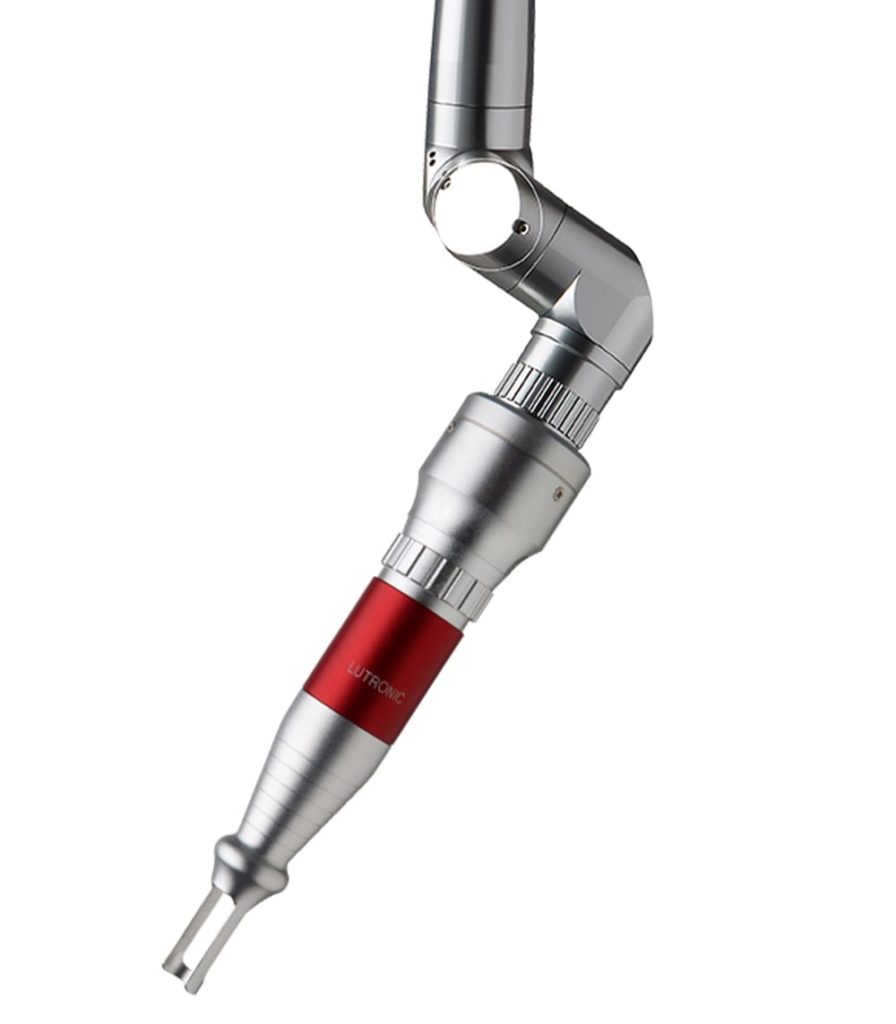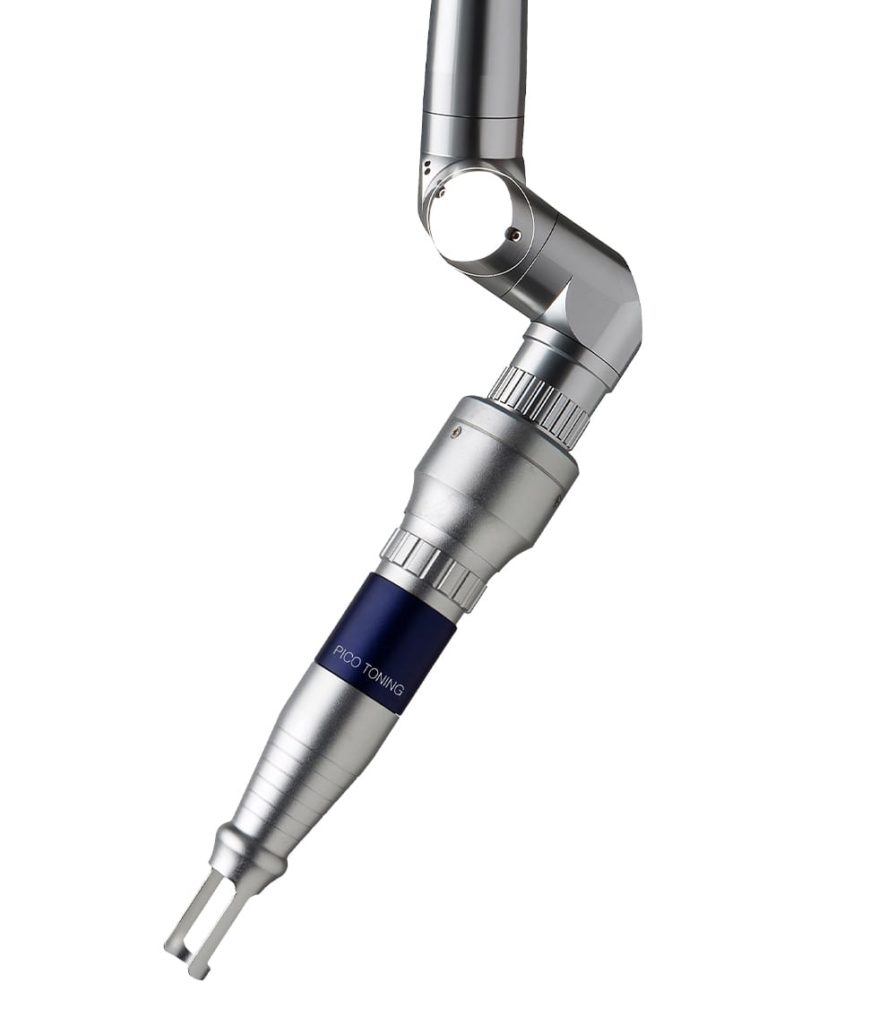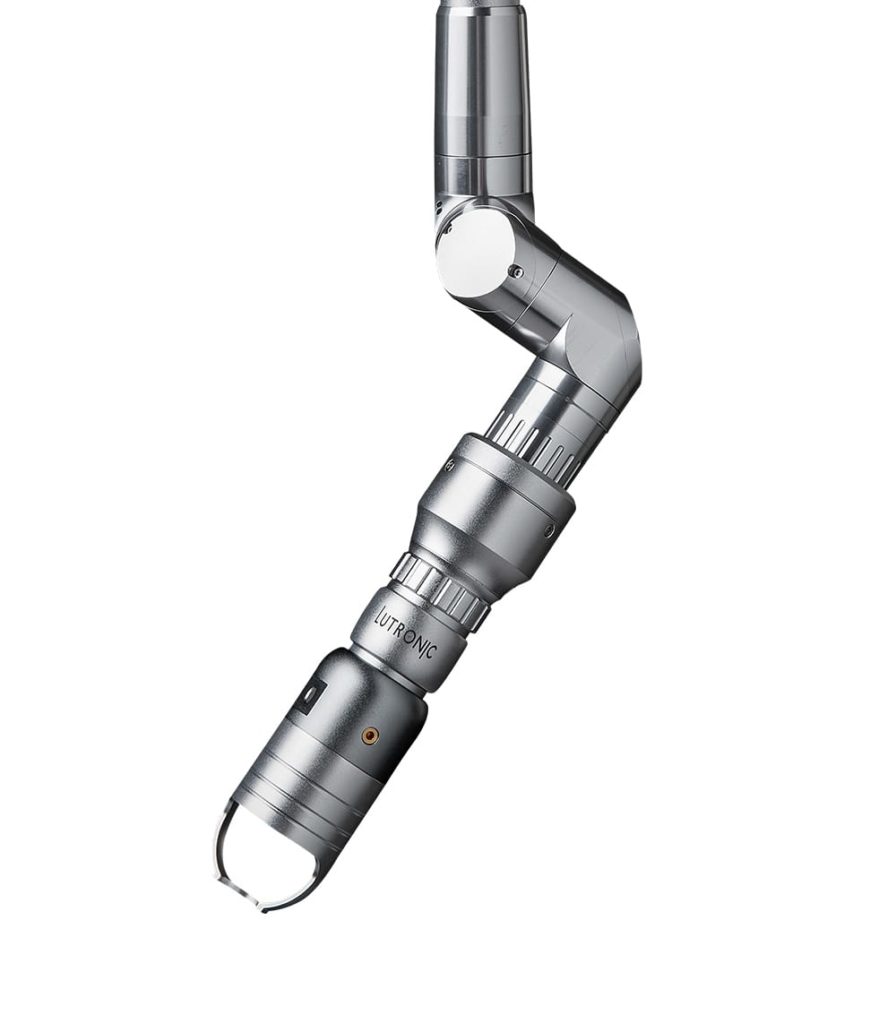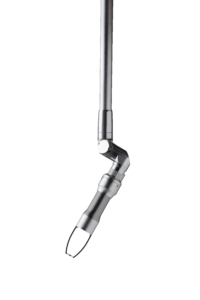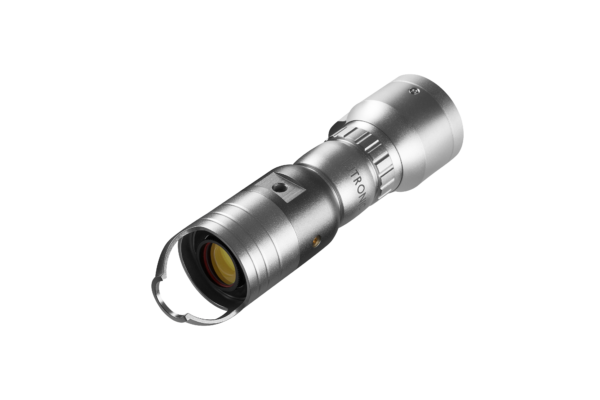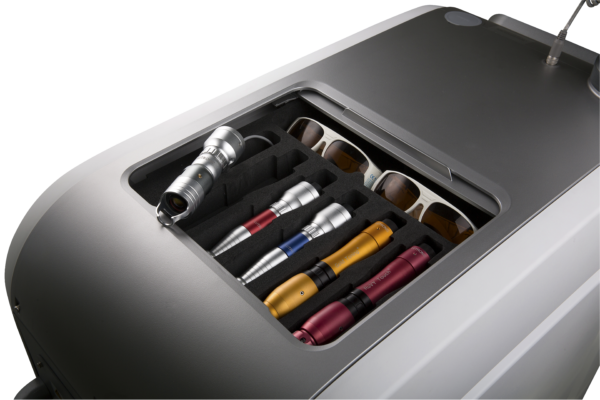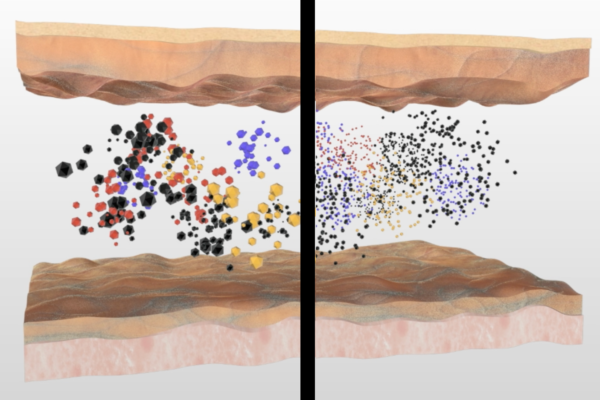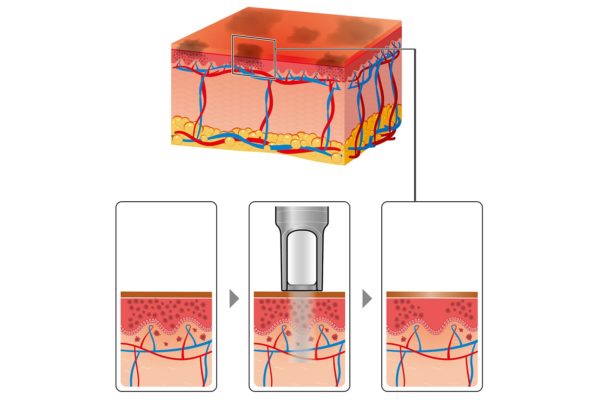POWER IS IN THE PULSE
The longer the pulse, the higher the temperature and the risk of resulting thermal damage to the surrounding tissue. With the shorter pulse width (pico seconds) you can now use the maximum power settings without risking tissue damage. Fast and safe. Nano creates larger particles that are difficult for the body to remove. Pico creates microparticles that the body can break down more easily.

Other Competing Lasers
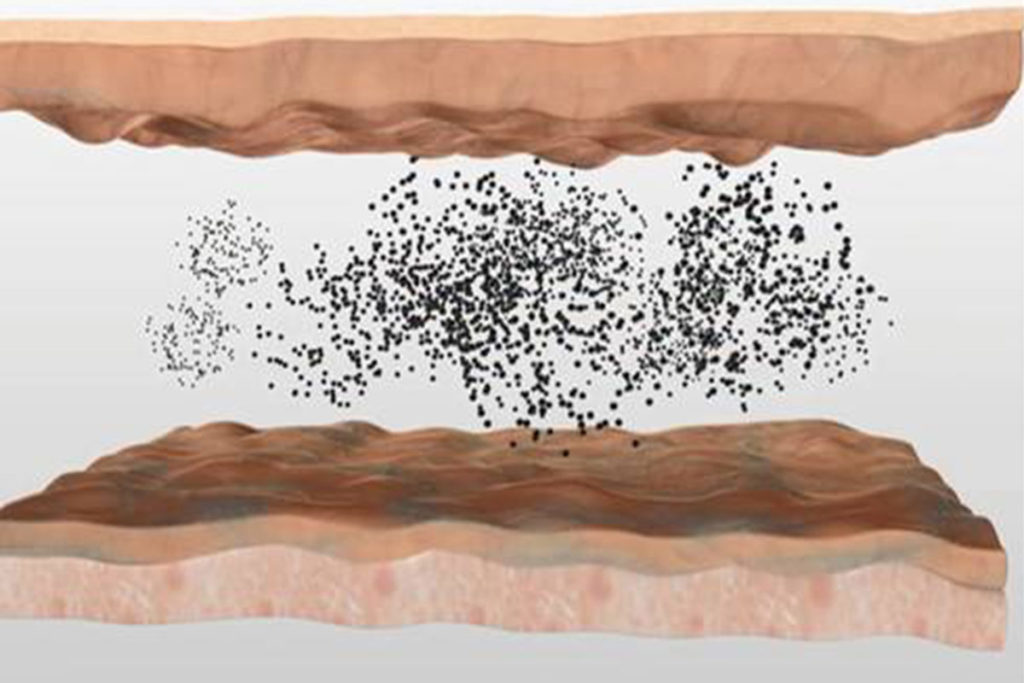
PICOPLUS®
BREAKING THROUGH CLINICAL BARRIERS
The picosecond pulse does more than just protect the surrounding tissue from thermal damage, it provides greater targeting and power to break up pigment into easier forms for the body to process. This improved targeting is what allows for faster and better clearance than what may be achieved from a nanosecond laser alone.
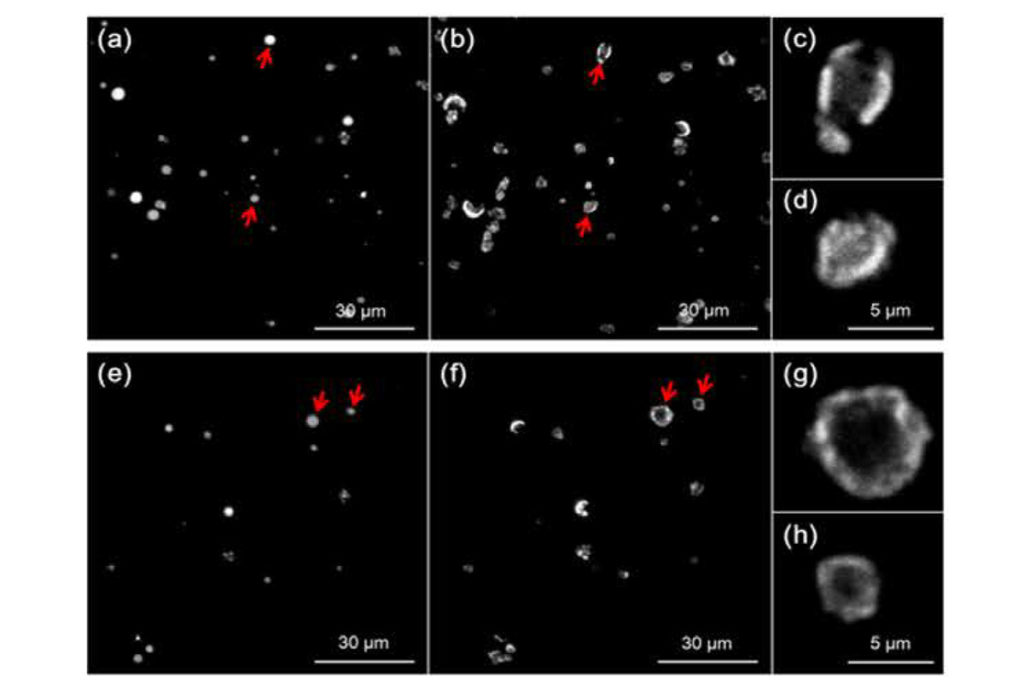
Image 1: Nanoseconds (Laser 4J/cm2)
Image 2: Picoseconds (Laser 2J/cm2)
From K. H. Kim, PhD. South Korea, PoHang Univ. of Science and Technology
In-vivo 3-dimensional high-resolution images captured by two-photon microscopy enable the comparison of tattoo pigments which have been shattered after nano- (ns) or picosecond (ps) laser devices. (a) (e) tattoo pigments before laser treatments. (b) tattoo pigments after laser treatment with the ns pulsewidth at 4 J/cm². (c)(d), magnified views of the particles shown by the red arrows in (b). (f ) tattoo pigments after treatment with the ps-laser at 2 J/cm². (g)(h) magnified view of the particles arrowed in (f ). The tattoo pigments treated with the ps-domain pulsewidth demonstrate much more efficient photofragmentation and more complete dispersal via the strong photoacoustic effect compared with those treated with the ns-domain pulse, despite the fact that the ps-domain energy at 2 J/cm² was half that of the ns-domain treated particles at 4 J/cm².

